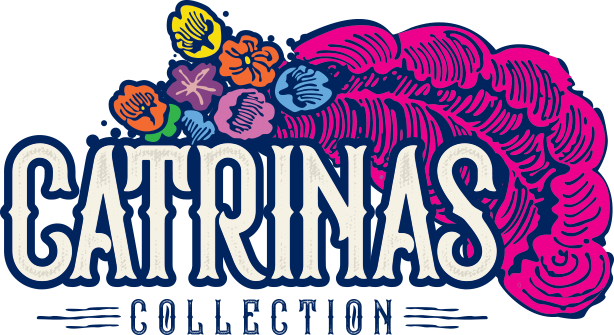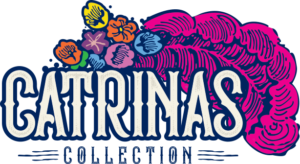El Instituto de Cultura de Cuernavaca
te invita a la inauguración de la exposición
Las
Catrinas
de
Ruth Geary
Las
CA
TRI
NAS
de
Ruth Geary

El ser humano se ha encontrado siempre con cuestiones que le resultan incomprensibles. Entre los misterios que rodean su existencia han estado siempre presentes la vida y la muerte. Entender y festejar la muerte se torna un rasgo muy marcado de nuestra identidad, somos un pueblo memorioso que conserva sus tradiciones y las ejerce. Para nuestros ancestros mexicas la muerte no tenía las connotaciones morales de la religión católica, por el contrario, creían que los rumbos destinados a las almas de los muertos estaban determinados por el tipo de muerte que habían tenido, más que por su comportamiento en vida.
Con la conquista nació un sincretismo religioso que dio lugar a una nueva forma de percibir y celebrar la muerte, Esta nueva perspectiva alcanzó otros aspectos de la vida novohispana, proyectándose en representaciones teatrales, eclesiásticas y pictóricas, hasta alcanzar, durante el México independiente, un tono más festivo. Comenzaron a hacerse calaveritas de azúcar, esqueletos de almíbar, muertitos de mazapán, y el reconocido mundialmente como Pan de Muerto. Durante los gobiernos de la Reforma, se popularizaron las “calaveras”, cráneos y esqueletos acompañados de versos en los que se criticaba de manera burlona a los poderosos y a la situación del país. A finales del siglo XIX el gran grabador José Guadalupe Posada consolidó definitivamente la tradición de hacer “calave- ras”, pues transmitió en ellas el carácter festivo y desenfadado del pueblo mexicano.
Así fue como a mediados del siglo XX el reconocido artista Diego Rivera en su mural “Un Domingo en la Alameda”, rinde un merecido homenaje a Posada al colocar a una sofisticada calavera Catrina al centro del mural. Esto bastó para que el ingenio mexicano comenzara a trabajar de diferentes formas, motivos y estilos a las “Catrinas” tradicionales del Día de Muertos.
El Ayuntamiento de Cuernavaca, a través del Instituto de Cultura se complace en presentar la exposición Las Catrinas de Ruth Geary, un esfuerzo de generosidad llevado a cabo por Walter Lopez Rivera y el Fomento Social Maria Felix AC. El esfuerzo de colección fue de Ruth Geary, empresaria filántropa norteamericana que radicó muchos años en Cuernavaca. La muestra tiene el objetivo de aportar a la tradición popular una muestra viva y permanente del arte de la elaboración creativa de las Catrinas en México.
Reza un refrán: “El rico viste de seda, y el pobre de mata rala, el consuelo que me queda, es que la muerte nos iguala”, y así lo comulgó el Maestro José Guadalupe Posada en la creación de ellas, LAS CATRINAS.
Humans have always encountered questions that are incomprehensible. Among the mysteries surrounding human existence has remained that of life and death. Trying to unders- tand and celebrate death is a very marked feature of human identity, for we are a species of memory who preserve our traditions and practice them. For Méxica ancestors of México, death did not have the fundamental connotations of the Catholic religion. On the contrary, the Méxica believed that the destiny of the souls of the dead was determined by the type of death one had, rather than by their behavior in life.
With the conquest was born a religious syncretism that gave rise to a new way of perceiving and celebrating death. This new perspective touched many aspects of life in New Spain, projecting itself in theatrical, ecclesiastical and pictorial representations, until culminating, during Mexican independence, into a more festive tone. Sugar skulls, syrup skeletons, marzipan dead, and the world-renowned Pan de Muerto appeared. During the governments of the Reformation there appeared the “skulls”; skulls and skeletons accompanied by verses in which the powerful and the political/social situation of the country were criticized in a mo-
cking way. At the end of the nineteenth century the great engraver José Guadalupe Posada consolidated the tradition of making “skulls” by transmitting in them the festive and carefree character of the Mexican people.
This was how in the mid-twentieth century the renowned artist Diego Rivera, in his mural “Un Domingo en la Alameda”, pays a well-deserved tribute to Posada by placing a sophisticated Catrina skull at the centre of the mural. This was enough for Mexican ingenuity to start working in different ways, with new motifs and styles added to the traditional “Catrinas” of the Day of the Dead.
The City Council of Cuernavaca, through the Institute of Culture, and by the generosity of Walter Lopez Rivera and the Fomento Social Mária Félix A.C., is pleased to present the exhibition “Las CATRINAS de Ruth Geary”. This collection was an effort of Ruth Geary, a USA philanthropist and entrepreneur who lived many years in Cuernavaca. This exhibition aims to contribute to the popular and living tradition of México through a permanent sample of the creative art of the Catrinas of Mexico.
A saying goes: “The rich wear silk, and the poor wear thin, the consolation that I have left is that death makes us equal”. This is how Master José Guadalupe Posada presented human life in his creation of, LAS CATRINAS.
Lorem ipsum dolor sit amet, consectetur adipiscing elit. Ut elit tellus, luctus nec ullamcorper mattis, pulvinar dapibus leo.
Lugar de
Exhibición
INAUGURACIÓN 5 de noviembre / 11:00 hrs. a.m.
Museo de la Ciudad de Cuernavaca
Av. Morelos 265, Centro Histórico, Cuernavaca, Morelos. C.P. 62000
Ruth Geary
RUTH GEARY fue una mujer enamorada de México, de la cultura mexicana, y muy particularmente de Cuernavaca. Ruth se mudó de California a Cuernavaca y aquí, en Cuernavaca, fue una destacada empresaria, filántropa y fanática de coleccionar Catrinas.
Esta colección se basa en las visitas de Ruth durante muchos años a galerías de arte en varias partes de México. En estas galerías, Ruth seleccionó y adquirió Catrinas con gran pasión. Luego exhibió sus Catrinas en su casa en Palmira Avenue para que ella, su familia y sus amigos las apreciaran.
En algún momento Ruth comentó que le gustaría que los ciudadanos de Cuernavaca apreciaran sus Catrinas. Si bien la salud de Ruth hizo que fa-
lleciera antes de que pudiera ver su deseo hecho realidad, su hermano y su hermana de los EE. UU., a través de The Estate of Ruth Geary, y su amigo el Sr. Walter López Rivera en Cuernavca, ayudaron a que el deseo de Ruth se hiciera realidad. Se otorga reconocimiento a la Sra. Andrea Espinosa por recordar este deseo de mejorar la comunidad que fuera de Ruth Geary.
Esta exhibición es posible gracias a la unión como patrocinadores de la exhibición del Municipio de Cuernavaca, representado por su Alcalde el Sr. José Luis Uriostegui Salgado, el Museo de la Ciudad de Cuernavaca (MuCIC), dirigido por el Sr. Juan Contreras, y las organizaciones “Cultura en el Mismo Canal A.C.”, dirigida por Gabriel Valdez, y el “Fomento Social María Félix A.C.”.
RUTH GEARY was a woman in love with México, Mexican culture, and very particularly with Cuernavaca. Ruth moved from California to Cuernavaca and here, in Cuernavaca, she was a noted businesswoman, philanthropist and fan of collecting Catrinas.
This collection is based on Ruth’s visits over many years to art galleries in various parts of México. At these galleries Ruth selected and acquired Catrinas with great passion. She then exhibited her Catrinas at her home on Palmira Avenue for appreciation by herself, family, and friends.
At some point Ruth commented that she would like the citizens of Cuernavaca to appreciate her Catrinas. While Ruth’s health had her die before she could see her wish come true, her brother and sister from the USA, through The Estate of Ruth Geary, and her friend Mr. Walter Lopez Rivera in Cuernavaca, helped Ruth’s wish come true. Recognition is given to Mrs. Andrea Espinosa for remembering this community-bettering wish of Ruth Geary.
This exhibit is made further possible by the coming-together of proud exhibit sponsors of the Municipality of Cuernavaca, represented by its Mayor Mr. Jose Luis Uriostegui Salgado, the Museum of the City of Cuernavaca (MuCIC), directed by Mr. Juan Contreras, and the organizations “Culture en el Mismo Canal A.C.”, directed by Gabriel Valdez, and the “Fomento Social Maria Felix A.C.”.
Lorem ipsum dolor sit amet, consectetur adipiscing elit. Ut elit tellus, luctus nec ullamcorper mattis, pulvinar dapibus leo.
Nuestros
Patrocinadores

Galería
de imágenes






Contacto


